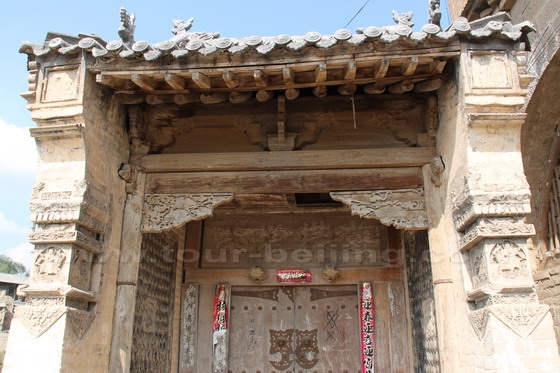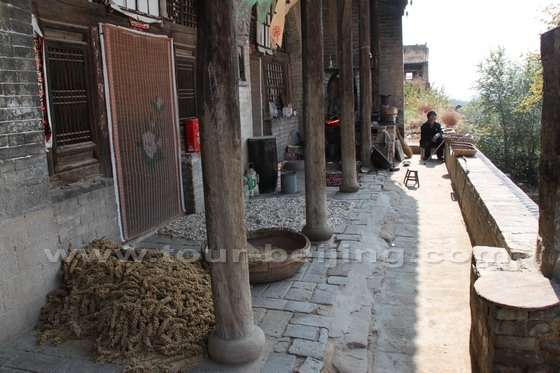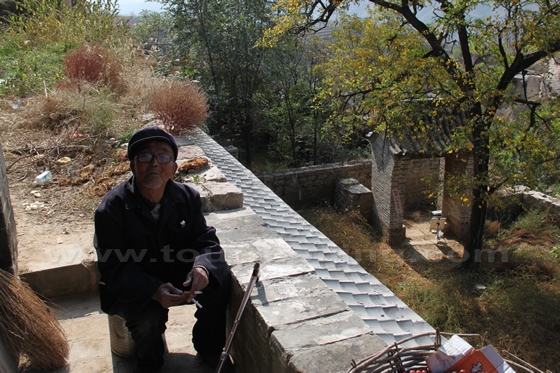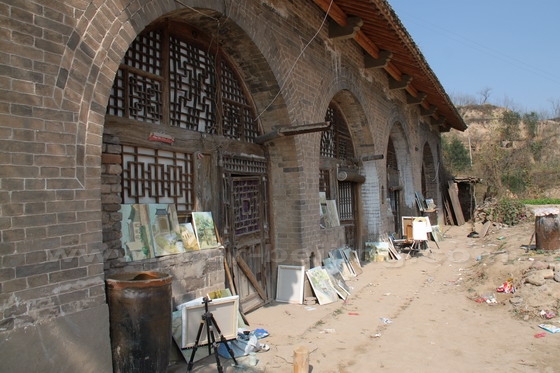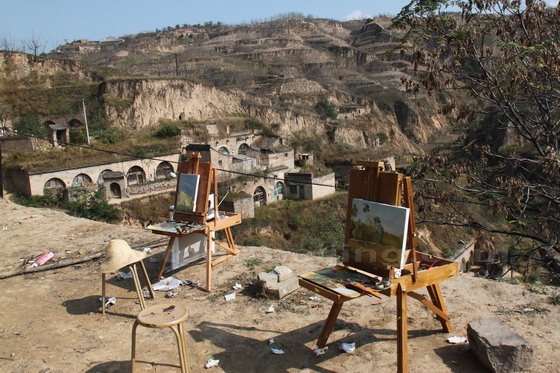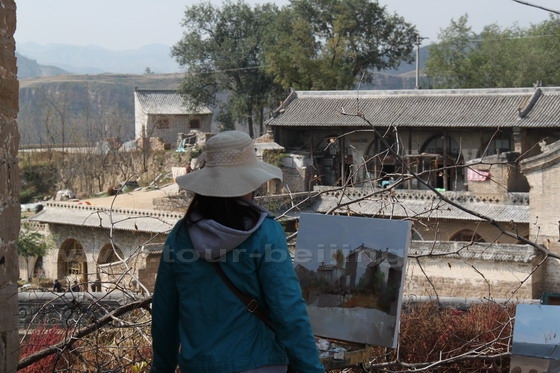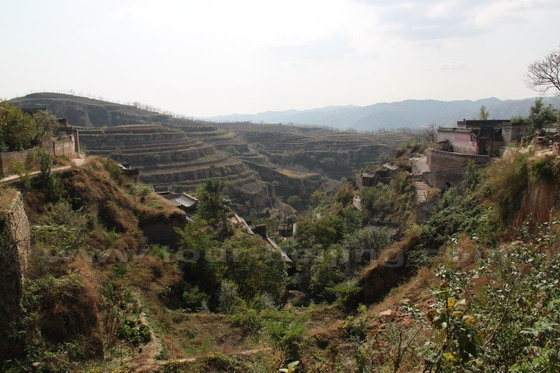When you plan your Shanxi tour, probably you would consider putting Datong or Pingyao into your travel bucket list. If you have extra time, you may go a bit further to take an adventurous exploration into the ancient Qikou Town (Qikouzhen) or its nearby enchanting Lijiashan Village (李家山村).
The big draw in Qikou Town is the nearby ancient village known as Lijiashan Village ( Literally, Li Family Mountain Village), a long-forgotten ancient settlement of cave dwellings. Lijiashan Village sits on the both sides of the valley in Lijiashan Hill, about 6km south of Qikou Town across Qiushui River, a tributary of the Yellow River.
Basic Information on Qikouzhen (Qikou Town)
Over 500 years ago, Qikou Town started to flourish as a port town owing to the waterway transportation of the Yellow River. At its heyday, Qikou Town was a place for men or merchants in particular doing trading business.
Many wealthy merchants in the town, for various reasons, maybe, for safety or modesty, arranged their families secretly away in the mountains. Lijiashan was one of their choices. So husbands or men worked in Qikou Town and their wives and children lived in the hills away from the town such as Lijiashan Village.
Lijiashan is a village now. But in the ancient time, the villagers in Lijianshan were not farmers and they were rich merchants’ families living on the income from the port trading business in Qikou Town. If you understand this, you won’t be surprised if you see the faded, but still seemingly magnificent cave houses. These are not just earth caves dwellings, they are brick, stone and tile cave dwellings built deep into the hillsides at theirs backs, but have front courtyards of bricks and tiles, just like a Chinese traditional courtyard.
Basic Information on Lijiashan Village
The layout of the cave houses in Lijashan Village is like a phoenix with the cave dwellings perched on the both sides of wings. Between the two wings is the body or the valley of Lijiashan Mountain. The cave houses on the both sides of the valley hug the hillsides and scale nine storeys. All the cave dwellings ( including the dwellings on both sides of the valley are linked by the stone paths and stairways that wind up or down the hills. Some of the stone paths and stairs date back to the Ming times.
Lijiashan was once home to over 600 families, most surnamed as Li, but today’s population is about 40, and most of them are elderly. So where are the other villagers in Lijiashan Village? They have moved down to a new Lijiashan village with better living conditions and facilities at the foot of the Lijiashan Mountain.
Some inhabitants on the old Lijiashan Village are engaged in tourism, offering cave dwellings accommodation and food services to visitors and arts students who come and even stay here for drawing and painting.
Beside tourists, you will see many arts students use the caves for their classrooms and drawing the picturesque cave houses and the mountain.
At the time of my writing, Lijiashan Village is very peaceful, and free of charge. You can enter most of the cave houses. Some cave dwellings are just empty with nobody living there. Some are still inhabited by local villagers who are very friendly to visitors.
The local people and the government as well are aware of the cultural value behind the hundreds of cave dwellings and going to do something to promote the local tourism, an effective way to improve the local economy. Sincerely hope for a long-term serenity and peace for Lijiashan Village.
How to Get to Lijiashan Village
You may take the morning long distance bus from Taiyuan West Coach Station (太原汽车客运西站)to Qikou Town, or via Lishi (离石). Taiyuan West Coach Station is located on Yingze Avenue 10km to the east of Taiyuan Railway Station. Take Bus No.01, 06 from Taiyuan Railway Station, you will get to Taiyuan West Coach Station. Add: Yingze W St, Wanbailin, Taiyuan Tel: 0351 6552571
Lijiashan Village Address: 5 km south of Qikou Town, Linxian County, Shanxi 山西省临县碛口镇南5公里.
Lijiashan Village – Pingyao: 177km
Lijiashan Village – Lishi (Lüliang): 58km
Lijiashan – Taiyuan: 243km
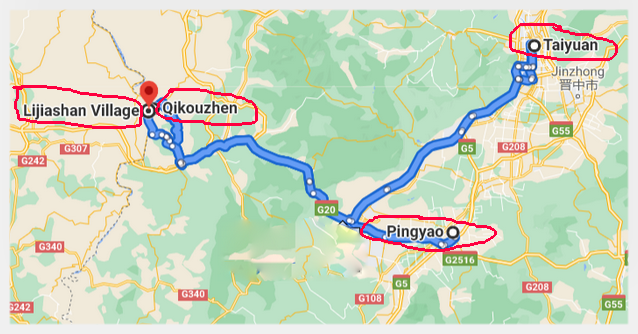
The buses from Taiyuan West Coach Station will go to Lishi and Qikou
Qikou: 4 hours, one daily 10:30am
Lishi (Lüliang): 2 hours, hourly from 7:00am to 7:30pm
Lishi (Lüliang) – Qikou: one hour, frequent 7:00am to 7:30pm
Take the buses from Pingyao Bus Station to Lishi, then from Lishi to Qikou.
Alternatively, if you are in Pingyao Ancient City, most of the hotels and inns in the old town arrange a day trip to Qikou and Lijiashan Village on a shared van or bus tour.
How to Get around in Qikou and Lijiashan
You may hire a local mini-van at a cost of RMB 60 to bring you to the top of Lijiashan Village from Qikou Town if you don’t want to take a 6 km walk up to Lijiashan.
If you prefer to walk to Lijiashan Village, you just cross the bridge over Qiushui River by the side of Qikou Bus Station. Then follow the river for about half hour. Then you will see a rock carved with the Chinese name of Lijiashan (李家山).
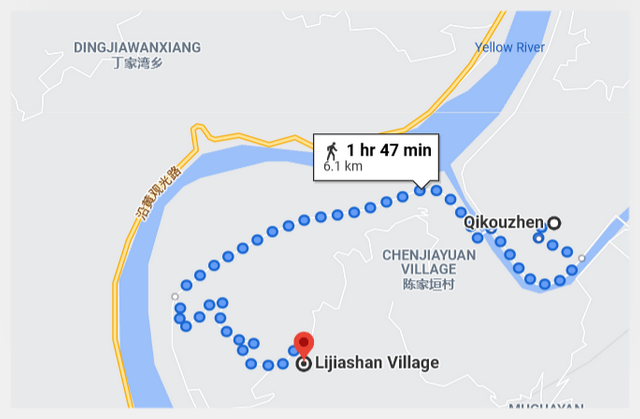
This is the new Lijiashan Village where you turn up on to the mountain road and you will reach the old village for about 30-40 minutes. You may first visit the west side of the cave houses, then move on to the east. Standing on the top of the one hillside will allow you to have a fantastic view of the other side.
If you are mesmerized by the natural beauty and the ancient Chinese venacular buildings in Lijiashan Village, you may stay overnight here in a cave house for RMB 50 per bed. Here you will realize your dream of experiencing Shanxi’s cave houses, but you cannot expect the comforts – no TV, no shower, no heating, no air-conditioning and just basic.
Virtual Tour of Lijiashan Village
Well, follow me to have a glimpse of Lijiashan Village
When you come across the big rock carved with the Chinese name of Lijiashan Villlage (李家山), you should stop and turn left and go up on to the mountain for the ancient Lijiashan Village.
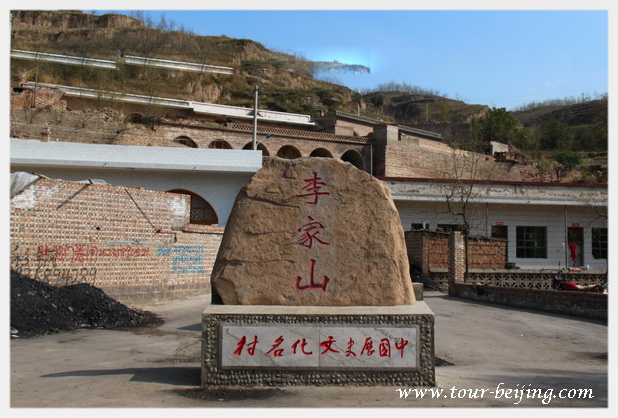
The narrow zigzag mountain leading up to Lijiashan
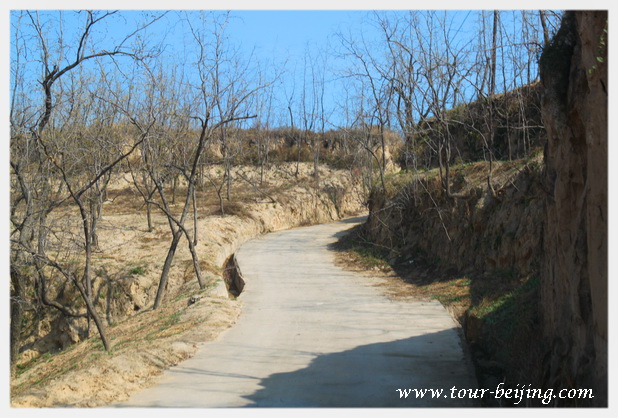
Approaching Lijiashan Village, look up and you will see the cave dwellings built on the both sides of the valley at Lijiashan Mountain:West Wing and East Wing, like a huge flying eagle.
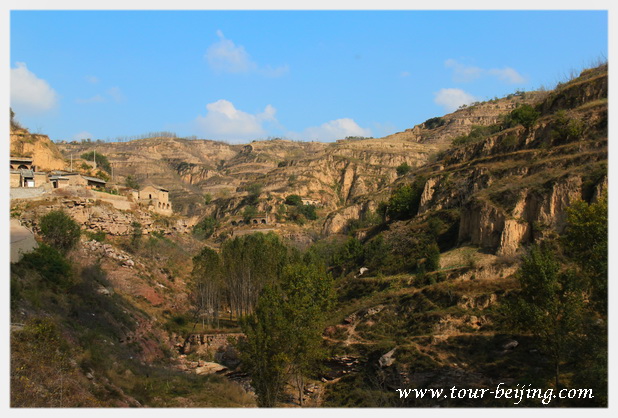
The east side cave houses viewed from the west side
Now we are on the top of the west wing. Standing on the west side, we clearly view the whole picture of the cave houses hugging the hillsides on the east side.
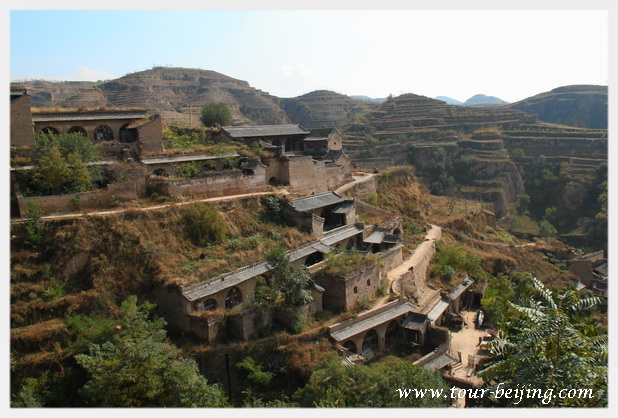
Have a close look at a wealthy two-storey cave dwelling on the east side of the valley at Lijiashan.
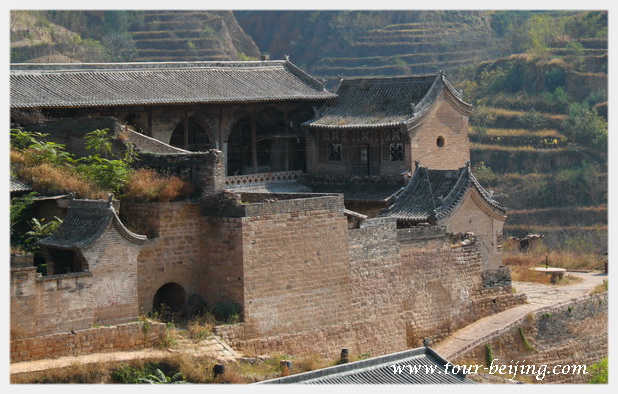
Multi-level layers of cave houses with courtyards.
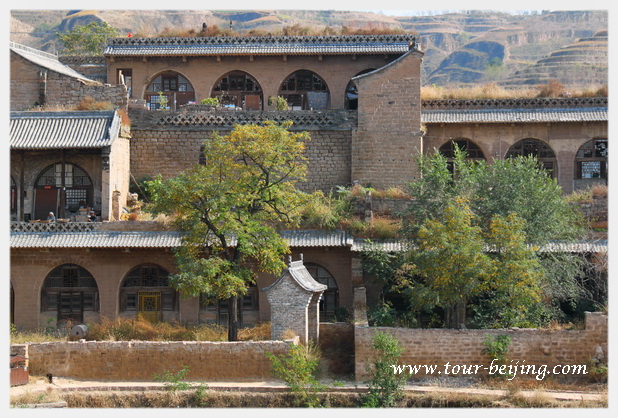
Visiting the cave houses on the west
This host’s courtyard is named Yellow River Family, a two-storey courtyard.
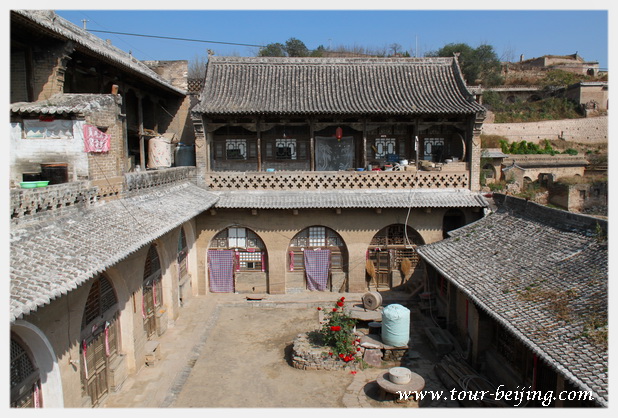
Peep into the stone kang beds in one cave room in Yellow River Family
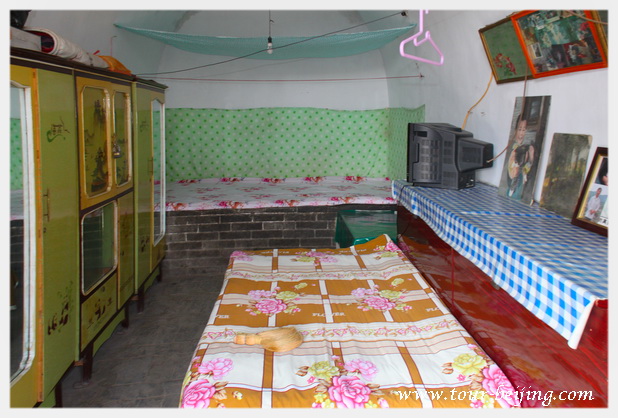
We enter the courtyard of the cave house.
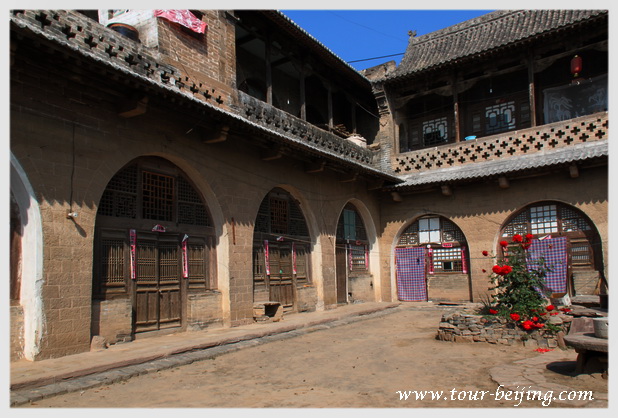
The cave houses are made of wood, stone and brick. Old wooden frame door and rings.
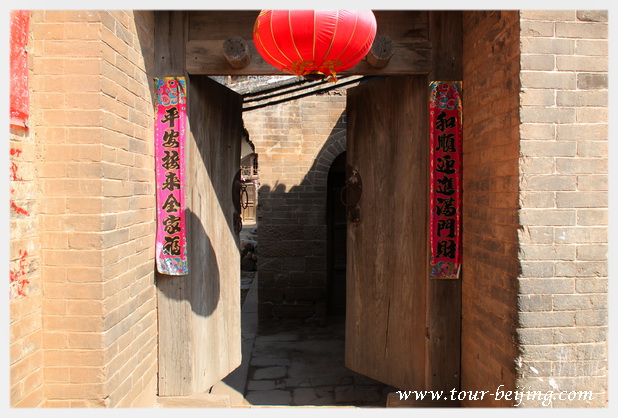
The entrance to Li Yinlan’s cave dwelling
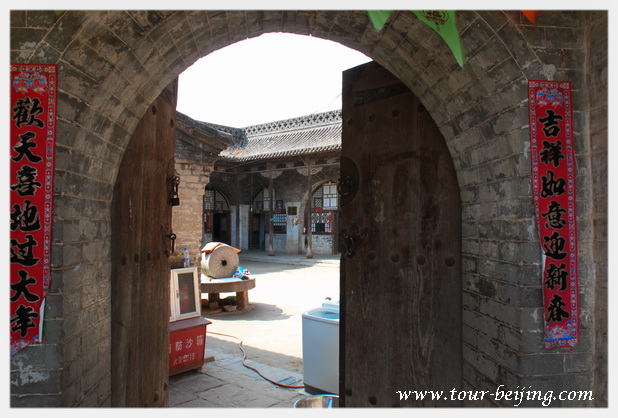
Li Yinlan’s courtyard is ornate and exquisite. The exquisite brackets, beautiful wood carvings and decorated tiles
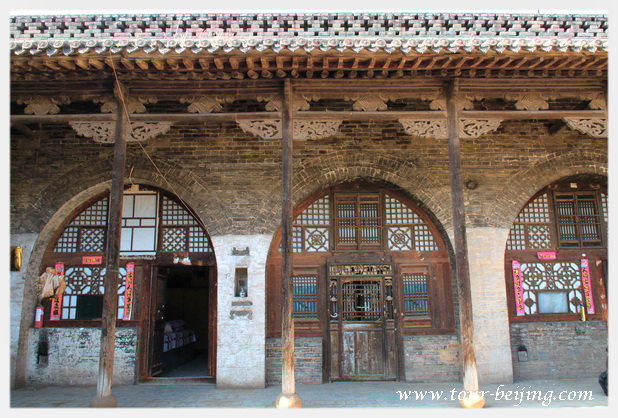
Walking from the west side to the east side
We walk down the valley and walk up to the east side. In the valley, we look back at the cave houses scaling the hillsides on the west side of the valley.
Clamber up the old stone stairs up to the east side of the valley.
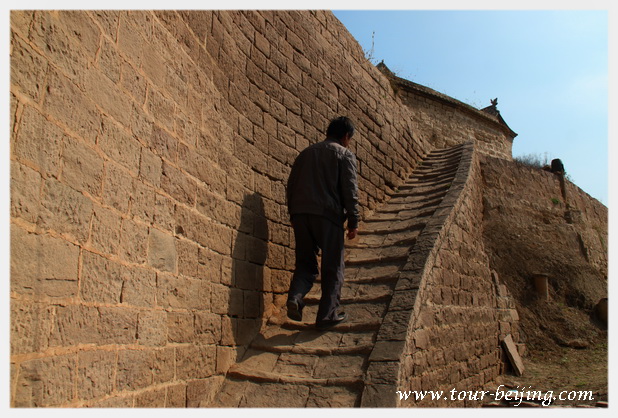
View the cave houses on the west side from the east side
View the cave houses perched on the west side from the east side
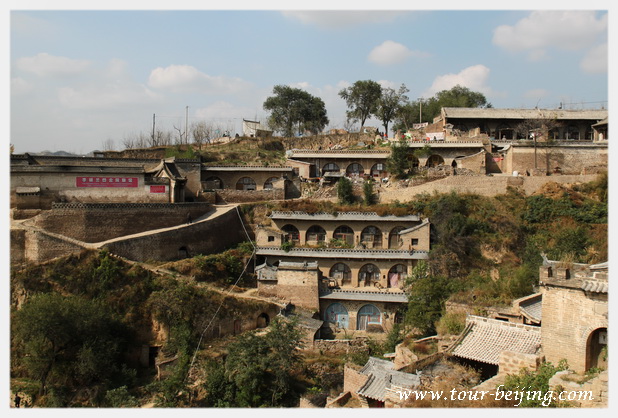
The cave dwellings on the west side of the valley
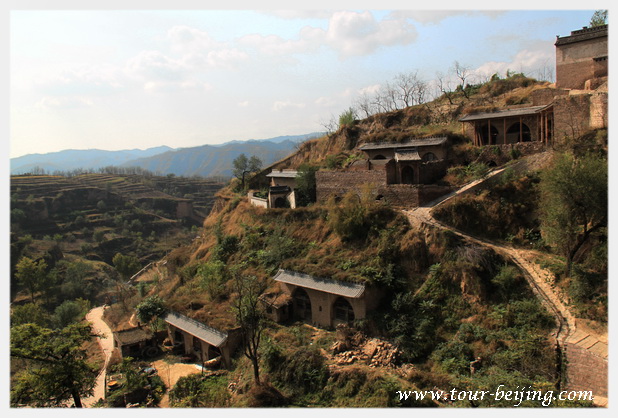
The cave houses on the east side of the valley
Ornate entrance to the most wealthy family on the east, but the door is closed.
A local senior’s cave house
The first local villager we have seen
A group of arts students stay here for drawing classes
A perfect place for drawing
Checking her painting
On the top, you clearly see the cave houses on the both side of the valley
Before leaving Lijiashan Village, don’t forget to have a bite of the yummy noodles made by the host at Yellow River Family.
Tip: Hassle-free Pingyao & Shanxi Guided Tours
If you don’t want to do a self-guided tour and prefer the hassle-free escorted tours, here are some options for organized tours to Pingyao and Shanxi Province:
Pingyao Tour
Pingyao Car Rental with Driver
Datong Tour
Datong Car Rental with Driver
Taiyuan Tour
Taiyuan Car Rental with Driver
Further Readings
How to Visit Pingyao
Best Time to Visit Pingyao
What to see in Pingyao
Where to Stay in Pingyao
How to get to Pingyao by bus
How to get to Pingyao by train
Beijing Pingyao High Speed Train
Pingyao Taxi
Visit Qiao Family Courtyard
How to Visit Zhenguo Temple
How to Visit Shuanglin Temple
How to Visit Wang Family Compound
How to Visit Zhangbi Ancient Castle
How to Visit Lijiashan Village (Tips, Photos & Map)
How to Visit Qikou Ancient Town (Tips, Photos & Map)
The Best Place to See Sunrise in Pingyao Ancient City
Any questions, just drop a line.






